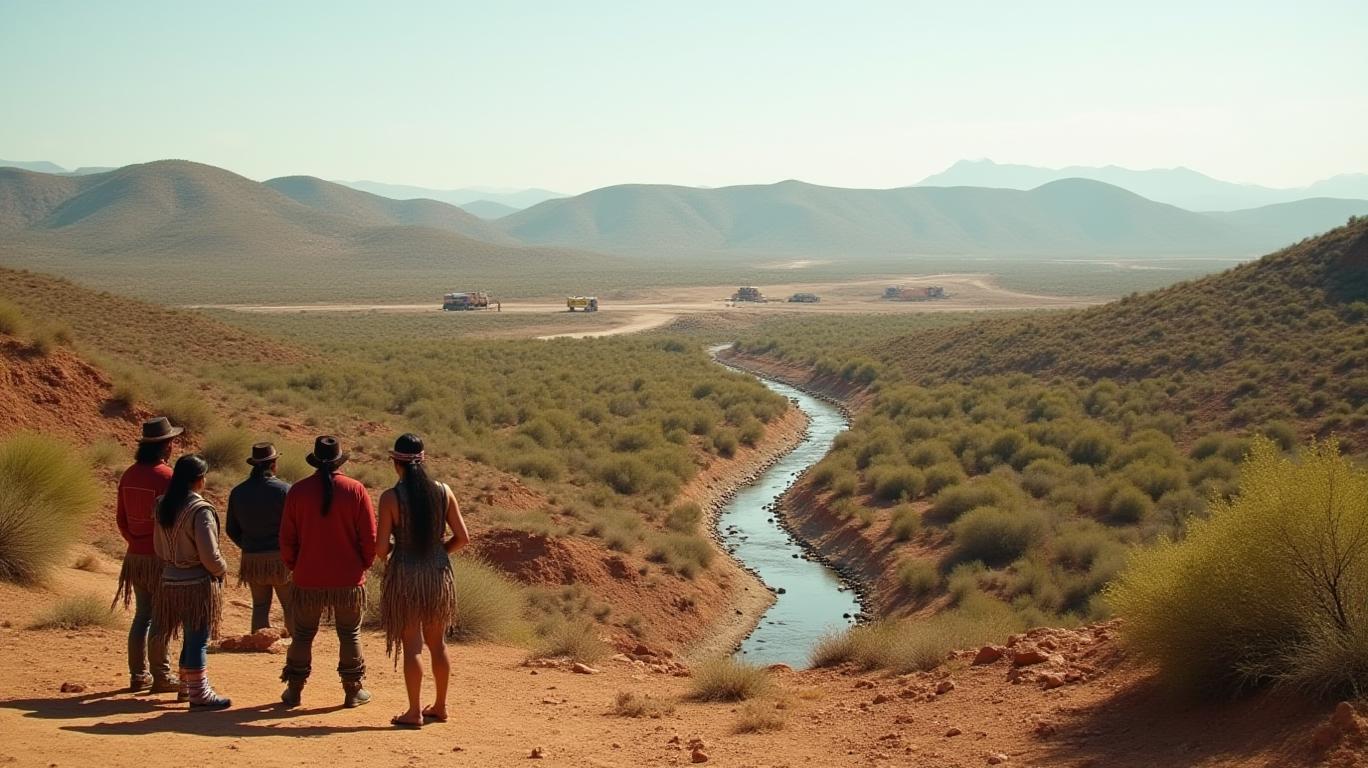Copper's Crossroads: How Regulatory Turbulence at Resolution Mine Threatens Supply Chains—and Your Portfolio
The Resolution Copper Mine project, poised to become one of the largest open-pit copper operations in North America, now stands as a flashpoint for a growing reckoning in the mining industry. A May 2025 federal injunction has halted its progress, exposing systemic risks that could disrupt global copper supply chains and upend investment strategies. For investors, this stalemate is a wake-up call: regulatory and cultural hurdles are no longer fringe concerns but existential threats to mining equities.
Ask Aime: Resolution Copper Mine's federal injunction halted; how does this affect global copper supply and mining equities?
The legal battle over Oak Flat—a site sacred to Apache communities—reveals a deepening clash between critical mineral development and Indigenous rights, environmental protection, and procedural fairness. With the U.S. Supreme Court set to weigh in by early 2026, the Resolution Mine’s fate hinges on whether courts will prioritize tribal sovereignty over corporate interests. The implications are stark: delays could extend beyond 2032, exacerbating existing copper shortages and reshaping the investment calculus for Rio Tinto (RIO) and BHP (BHP), the mine’s joint owners.

The Legal Quagmire: A Blueprint for Regulatory Risk
The injunction, granted by Judge Steven P. Logan, underscores a critical flaw in the project’s approval process: rushed environmental reviews and inadequate tribal consultation. The National Historic Preservation Act (NHPA) and Religious Freedom Restoration Act (RFRA) violations at the heart of Apache Stronghold’s lawsuit highlight a pattern of procedural shortcuts that could jeopardize other mining projects.
Apache Stronghold’s argument—that the mine’s subsidence crater would irreparably harm sacred sites, water sources, and endangered species—has already triggered a $45–60 million quarterly hit to Resolution’s partners. For Rio Tinto and BHP, this is more than a financial setback; it’s a reputational crisis. Share prices for both firms have already dipped on the ruling, reflecting investor anxiety over regulatory overreach.
The broader threat? This case sets a precedent for Indigenous groups and environmental advocates to challenge other projects under RFRA and NHPA. The Thacker Pass lithium mine in Nevada and Twin Metals’ Minnesota copper project face similar battles, suggesting a trend of prolonged legal battles that could delay critical mineral production timelines by years.
Copper’s Supply Chain on the Brink
The stakes are existential for copper-dependent industries. At full capacity, Resolution would supply 120,000 tons of copper annually—3% of U.S. consumption—critical for EVs, renewable energy infrastructure, and national defense. With global copper demand projected to triple by 2050, delays at Resolution could worsen existing supply gaps.
But the ripple effects go further. The injunction has already forced Resolution to suspend shaft-sinking operations, pushing its start date past 2030. For investors, this means:
- Higher costs: Delays inflate capital expenditures and legal fees.
- Lost revenue: Every year of delay erodes the mine’s $63.4 billion projected economic impact.
- Supply chain instability: A delayed Resolution exacerbates reliance on Chilean and Congolese copper, regions with their own geopolitical and labor risks.
Investment Strategy: De-Risk or Divest?
The Resolution stalemate forces a hard look at mining equities with high regulatory exposure. Rio Tinto and BHP, while diversified, face reputational and financial penalties from projects tied to Indigenous land disputes. Investors should:
- Rebalance Exposure: Reduce positions in firms with unresolved legal battles or projects on sacred lands.
- Bet on Copper Futures: Short-term gains await as supply tightens. The injunction’s impact on futures prices is just the beginning.
- Target De-Risked Projects: Firms like Freeport-McMoRao (FCX) or First Quantum Minerals (FM) with projects in politically stable regions or advanced permitting processes offer safer upside.
- Monitor ESG Metrics: Prioritize companies that proactively engage with Indigenous communities and adhere to environmental safeguards.
The Bottom Line: Regulatory Risk is the New Frontier
The Resolution Mine case is a harbinger of a new era in mining investment. As courts increasingly side with Indigenous rights and environmental protections, projects with unresolved cultural or procedural issues face existential risks. For investors, this is not just about avoiding losses—it’s about capitalizing on the transition to a “de-risked” mining landscape.
Act now. The copper crossroads is here.
JR Research maintains no positions in the securities mentioned. This analysis is for informational purposes only.










